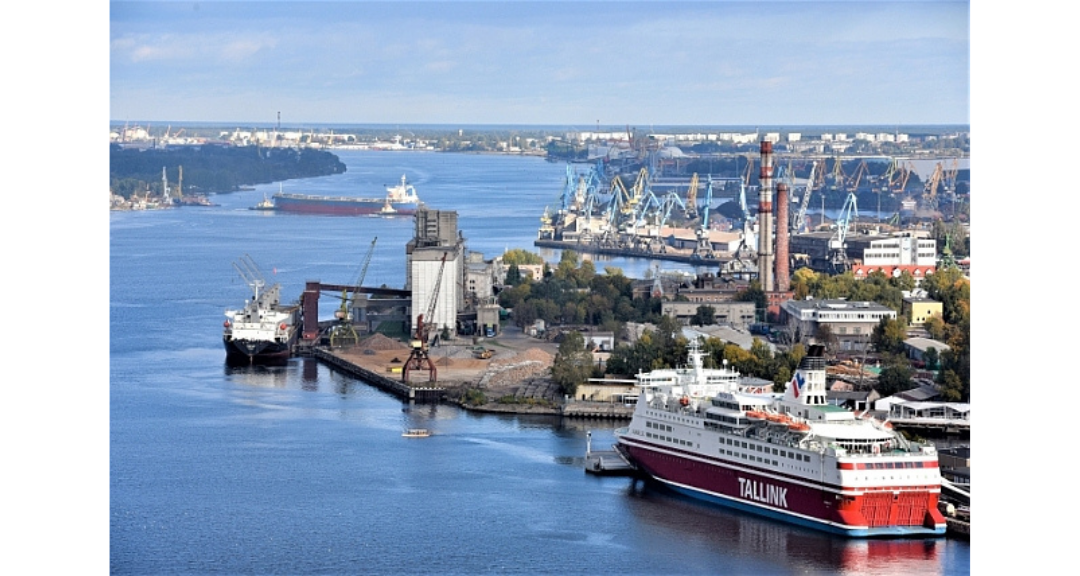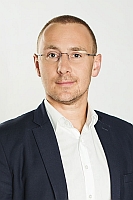 Interview with Edgars Sūna, Deputy CEO for Port Development, Freeport of Riga
Interview with Edgars Sūna, Deputy CEO for Port Development, Freeport of Riga
The Port of Riga unveiled its Development programme 2019-2028 at the beginning of this year. It will be based on a socially responsible policies, sustainable use of resources and care for the environment. An opportunity for us to discuss that with Edgars Sūna as a prelude to the AIVP Days that will be held in Riga on 6-8 June 2019.
The Freeport of Riga Authority is an active member of AIVP since 2006!
AIVP – Your Development Programme 2019-2028 was presented to the media and your partners in February. An important element is that you aim to reconcile competitiveness with respect for the environment. This was one of the reasons for relocating your activities from the city centre to Krievu Island. The move has been completed and the Krievu Island terminal has been operating since December. Can you remind us what led you to decide on this move, and the impacts you expected would result??
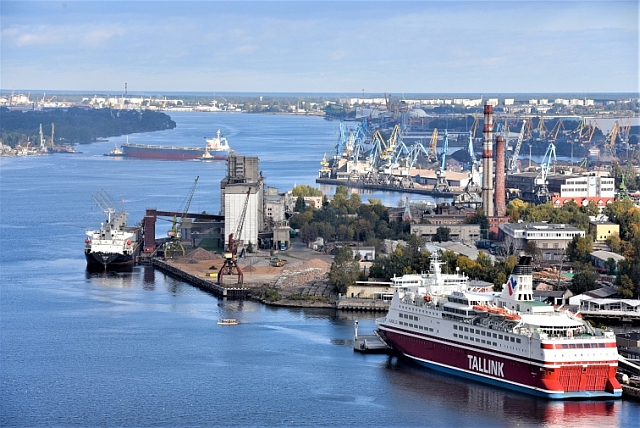 Edgars Sūna, Freeport of Riga – The decision to relocate dry bulk cargo handling activities away from the city center closer to the mouth of the River Daugava was taken as early as in 2005. At that time, the management of the Riga City Council and also the Port were inspired by numerous examples across European countries, including ports in Scandinavia, of the concept that historical, i.e., comparatively more degraded port infrastructures could be transformed into modern urban areas, thus, accommodating increasing needs of the city for more space, cleaner environment and ensuring its inhabitants with more direct access to the water front. Also, it should be mentioned that the booming real estate market at the time secured additional impetus for the start-up of the Project because of various potential investors’ visions for Andrejsala and Eksportosta territories. These ambitions gained public appreciation and also political attention and support.
Edgars Sūna, Freeport of Riga – The decision to relocate dry bulk cargo handling activities away from the city center closer to the mouth of the River Daugava was taken as early as in 2005. At that time, the management of the Riga City Council and also the Port were inspired by numerous examples across European countries, including ports in Scandinavia, of the concept that historical, i.e., comparatively more degraded port infrastructures could be transformed into modern urban areas, thus, accommodating increasing needs of the city for more space, cleaner environment and ensuring its inhabitants with more direct access to the water front. Also, it should be mentioned that the booming real estate market at the time secured additional impetus for the start-up of the Project because of various potential investors’ visions for Andrejsala and Eksportosta territories. These ambitions gained public appreciation and also political attention and support.
Finally, the dialog between the City and Port regarding future development priorities and needs of both sides resulted in an agreement that Port should leave the City center by means of expanding in its northern part, e.g., reclaim new lands and building brand-new infrastructure on the Krievu sala Island- a place without any infrastructure at all.
The Port, on the other hand, seized this opportunity of public and political support to create modern and powerful infrastructure, the development of which would raise competitiveness and offer port’s customers better services. The placement of new dry bulk facilities on the Krievu sala, which is closer to the port’s entrance, reduces not only the environmental impact of port activities in the vicinity of the historic city center, but allows to reduce the negative impact on the whole – ships make a shorter route to the new terminals, so the environment is less affected. Even more – relocation provides substantial cost saving in dredging and maintenance of the main shipping fairway. So, without doubt, we can assert that the implementation of the Krievu sala Project, that we successfully completed in 2018, is a “win-win initiative” for both – the City and the Port.
AIVP – What other major actions for sustainable development have you carried out and/or programmed?
Edgars Sūna, Freeport of Riga – Truth to be told, sustainability measures as such are by no means any kind of innovation in the new Riga Port Development Program 2019-2028. Activities like monitoring of various environmental aspects, improving of environmental protection technologies, as well as administrative procedures on environmental matters within the Port Authority have been rather routinely tasks already for a long time. Just to mention some:
- we have carried out clean-ups of historically contaminated port areas from various oil residual products;
- several air quality monitoring stations have been installed- including just recently on the Krievu sala- that constantly keep track of air quality in the port area;
- there are regular water quality check-ups to identify and minimize contaminations and prevent major pollutions, etc. Also, the Port Authority is vigorously promoting implementation of such best environmental practices and technologies among our terminal operators. In fact, for a long time now we are ISO 14 000 compliant and, thus, we try set an example and instil this approach into the port’s terminals operations as well – it all starts with commitment and true belief in the need of such measures.
Still, I can assert that in the new Riga Port Development Program 2019-2028 we have addressed sustainability issues even more thoroughly, understanding their increasing role and our responsibility to the community for the environmental impact port’s activities create. In a nutshell, during the next decade our goal is to develop the Riga Port as a “smart port”, further improving and automating technologies, integrating monitoring systems between various state authorities involved, synchronizing and speeding-up exchange of information in various aspects, including those of environmental protection measures. We hold to the opinion that what we do today should bear no adverse impact on the port surroundings in the future, no matter how tempting the gains are. We simply cannot afford being selfish and irresponsible.
AIVP – This 2019-2028 Development Programme also lays stress on developing passenger transport. 75,000 cruise ship passengers visited Riga in 2018, and according to estimates this figure could more than double by 2030. Will your existing facilities be able to handle this number, or will you need a new terminal? What solutions do you envisage to manage this tourist activity and its impact on the urban environment?
Edgars Sūna, Freeport of Riga – Indeed, increasing of passenger traffic- both cruise and ferry- is one of our strategic goals for the next decade, according to the new Riga Port Development Program 2019-2028. There are several surveys and forecasts, carried out by reputable organizations and associations of the cruise industry, justifying solid growth and pointing at the market potential. For example, according to CLIA (Cruise Lines International Association), the number of cruise passengers in Europe is expected to reach 12.3 mln in 2026 from the current 7 mln. passengers in 2017, so we see that this is almost a double number. Needless to say, cruise in the Baltic Sea is still an emerging market with a vast potential because of yet not fully explored, as well as new destinations that are catching the eye of cruise lines, as compared to the well-known destinations in Central Europe and Mediterranean. We plan to exploit this opportunity of overall expected market growth in the cruise market, including potential growth also in the Baltic Sea.
In view of the abovementioned, in our new Development Program we have set the goal of reaching 150 cruise vessel calls annually during the cruising season, which lasts from May to September. This is quite ambitious, as opposed to our present number of cruise – on average 85 vessel calls per season. Surely, for such hectic traffic we will require new or, rather, additional infrastructure, given that cruise season lasts only few months and several cruise vessels call at the port at the same time.
Here I must admit that quite unintentionally but luckily for us, the implementation of the Krievu sala Project, whereby we relocated heavy dry bulk handling from the city center to the brand new facilities on the Krievu sala island, has open up new opportunities for servicing, for example, cruise vessels.
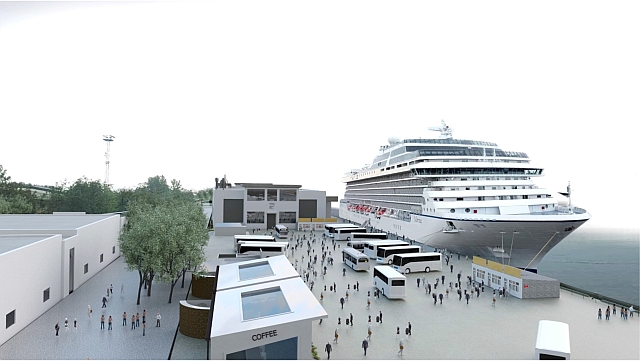
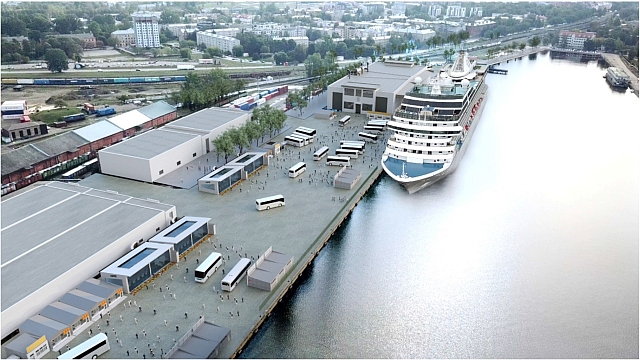
There are two important aspects that justify reprofiling these areas exactly for cruise vessels. First and foremost, the Territorial Plan and Zoning of the City basically allows no other type of “cargoes” than RoPax vessels to be handled at the Andrejsala area and, secondly, this is the right place at the port to deal with cruise vessels, as it offers up to 500m quay length with vessels draft up 11m. Nonetheless important is the fact that this area is just some 10 min driving distance from the Old Riga, where most of the tourist attractions are located. We believe that this former heavy-duty dry bulk area will become a good addition to our existing Passenger Terminal infrastructure for servicing more and also larger cruise ships. We also like to think that the City and its tourism industry in particular will like and support our initiative.
AIVP – Your published programme also stresses social responsibility. As you know, AIVP pays a lot of attention to this aspect of the Citizen Port. You have carried out a number of actions in this area. I am thinking particularly of the Meeting which you held last November with the inhabitants of Riga to present this Development Programme and discuss your future, or of the competitions in which you have invited students to participate. Can you tell us about these exchanges, their results, and any other kinds of social actions that you have carried out or are planning to do?
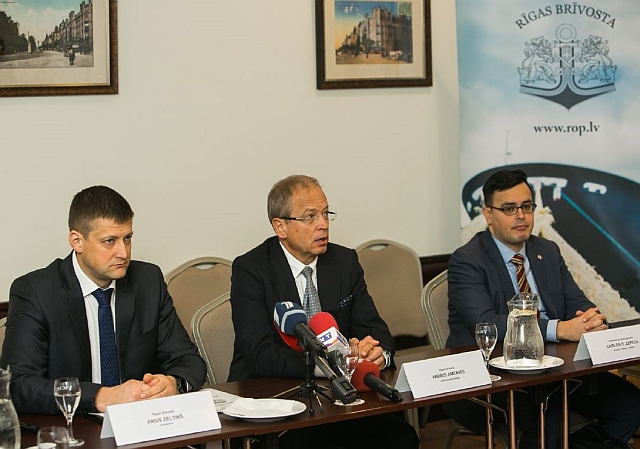
Edgars Sūna, Freeport of Riga – It is true that compared to the previous development program, our new strategy places even greater emphasis on how we manage the port’s relationship with the society. We have learned from our experiences in the past that making citizens our allies is more important than just trying to co-exist side by side. Society’s indifferent attitude to the port is not enough for us because lack of competence about processes going on at the port can result in no support and we risk to fail implementation of some good projects. Whereas, involvement of the community into the decision making and consulting them let the people feel respected and equally engaged in the port matters.
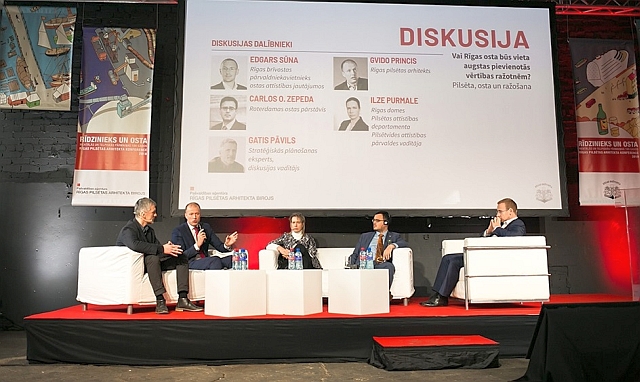
Therefore, also in the future we shall strive to educate the society about our plans and, of course, communicate with representatives of the adjacent residential areas to the port on a more regular basis about activities that might intersect with their interests. Personally I think that with our new port strategy there has happened a change in our mindset too- surely to the better side because we now regard the society more like our stakeholders and partners rather than just neighbours behind some wall.
We will continue organizing and participating in various social activities and large-scale events at the port and the city. Firstly, the Riga Port is along-time partner of the city for organizing the annual City festival that takes place every year. This is the most famous public event during summer and the port gets a lot of positive publicity and appreciation for that. During the festival, we strive not only to entertain the people and city guests, but to talk about the port’s work in an interactive form, allowing people to better understand the role of the port in the city life. Special attention is paid to young people and children – this is the generation that will develop both the port and the city in future.
Secondly, every year in Spring we organize “collective clean-up of environment”, the so-called Lielā talka activity that is typical in Latvia; after the long winter we like to go together outside and spend time in the fresh air working side by side and cleaning up our surrounding environment. Every year the Riga Port organizes Lielā talka somewhere at the port area and we clean up territories of the adjacent residential areas, which is appreciated by the people.
Finally, there are several other smaller public activities, e.g., contests for school student on the best City and Port development ideas, drawing contests for kids on the future vision of the port, etc.
The City of Riga and the Port of Riga have been inseparable concepts for more than eight centuries – the city is important for the port and the port – for the city. This idea will always be a key issue both in the daily work of the port and when planning our future.
AIVP, April 2019

